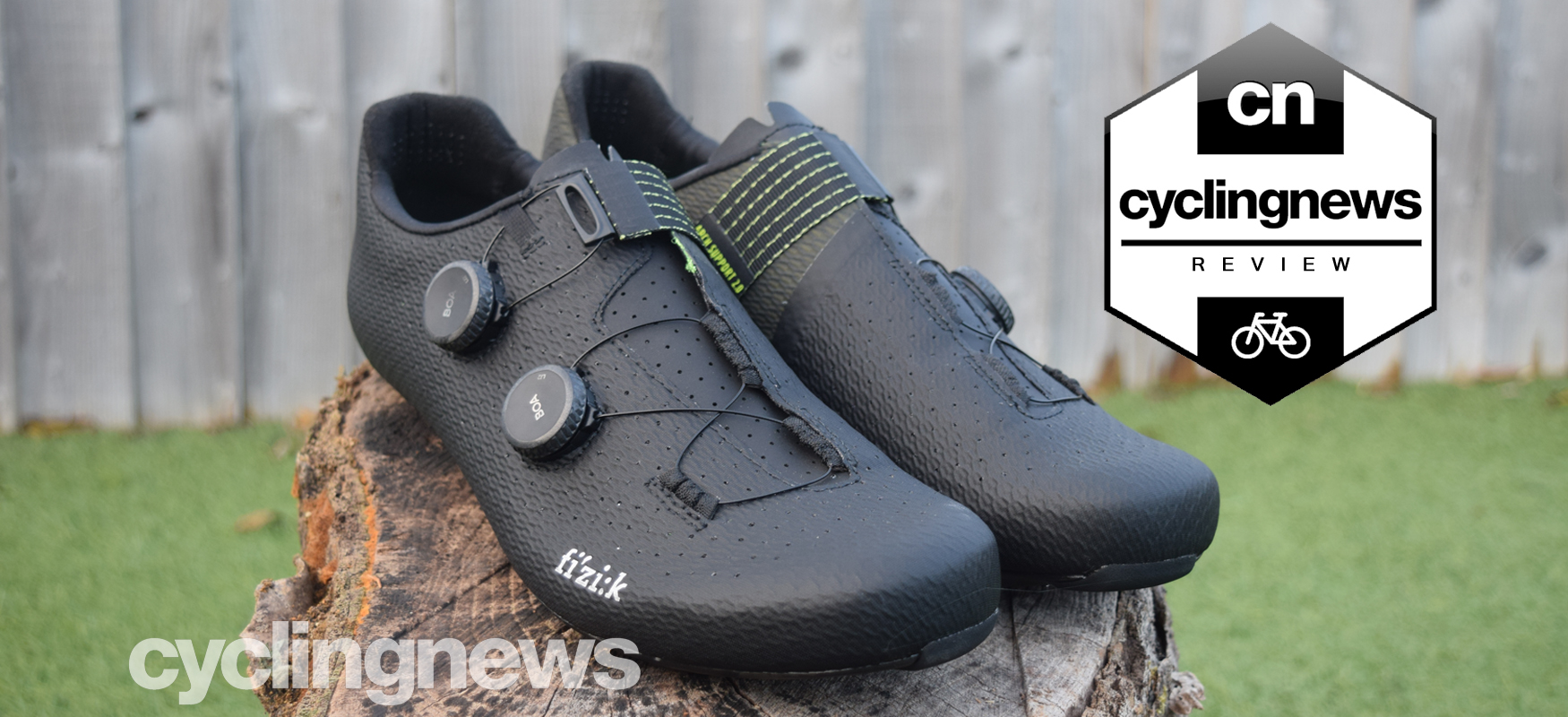Cyclingnews Verdict
A genuinely brilliant idea and innovative solution to a problem, but the overall shoe design needs work
Pros
- +
Immediate comfort
- +
Powerfully stiff sole
- +
No signs of premature wear after seven months of use
Cons
- -
Trade-off between support and tightness
- -
Vague heel
You can trust Cyclingnews
When the Fizik Vento Stabilita Carbon shoes were launched in October of 2020, they immediately raised eyebrows thanks to their innovative take on solving the variable arch support requirements of riders. I've always had a gripe with cycling shoe manufacturers who make no provisions for arch support, so when the email from Fizik's new launch landed in my inbox, I just had to get my hands - feet - on a pair to put the new idea to the test.
It's widely accepted that incorrectly supported arches can very easily lead to compensation injuries further up the chain of movement, and arch height is an incredibly common differentiation between two riders' feet. Given the price of the best cycling shoes, the amount of time a rider will spend using them, and the continual high-force interaction between the foot and the shoe, it seems incredible that manufacturers would deem a single arch height acceptable for all of their potential customers.
The best in this regard typically offer insoles with a choice of inserts which Velcro into place on the underside of the sole, and these are usually restricted to a choice of three heights. This is usually adequate enough for a rider to find a suitable level of support, but it's not uncommon to have to spend time getting used to a not-quite-perfect level of support.
Meanwhile, with the Vento Stabilita Carbon, Fizik has focussed on this area right from the drawing board, and the Italian company claims the benefits of their solution extends beyond comfort, affecting power transfer and performance too.
At $399.99 / £374.99, there's no denying the resulting pair of shoes is expensive, so with their unproven design, they're going to have to perform very well if they are to convince us to switch away from the likes of Shimano's S-Phyre, Specialized S-Works 7 and more.
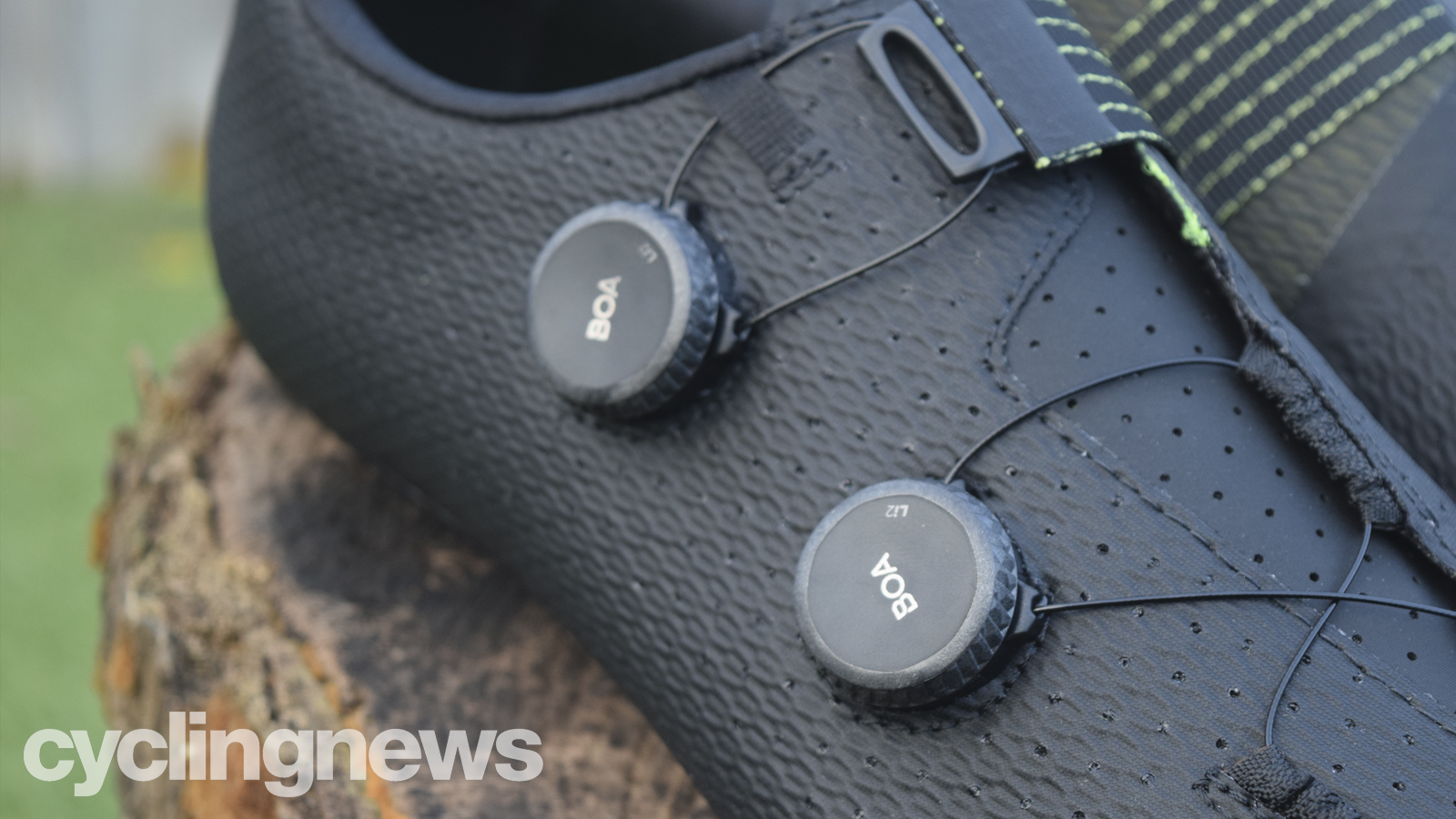
Design & aesthetics
From a purely visual standpoint, the Vento Stabilita Carbon shoes are incredibly good looking. Their matte black finish is sleek, classy and modern, and Fizik has done well to draw attention to the shoes' key feature with a contrasting high-vis fluorescent yellow finish.
To tackle the issue of arch support, Fizik started with a radically redesigned carbon sole, which cuts away the carbon fibre from beneath the arch, offering a narrow length of carbon that tracks around the outer edge of the foot's sole.
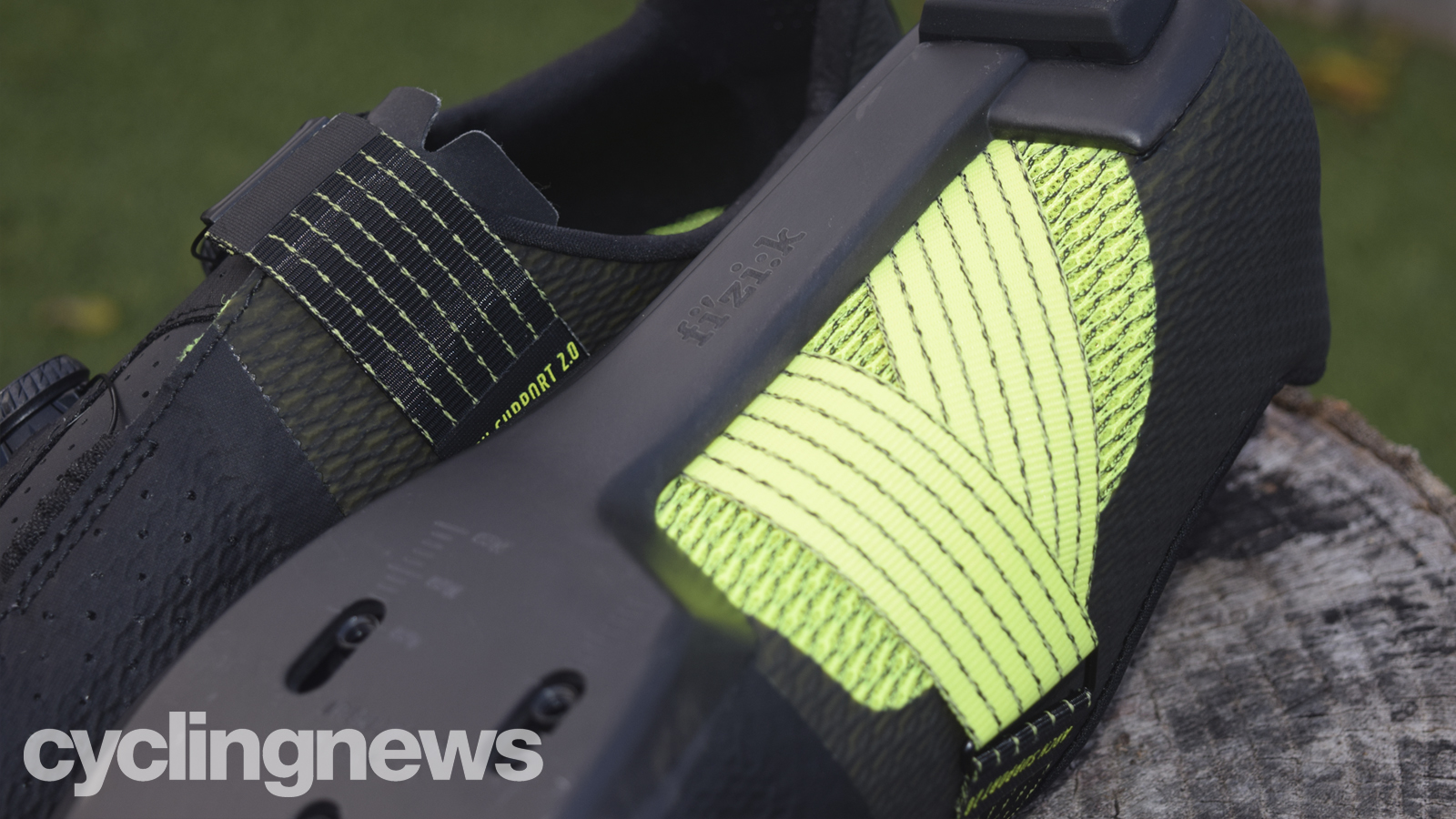
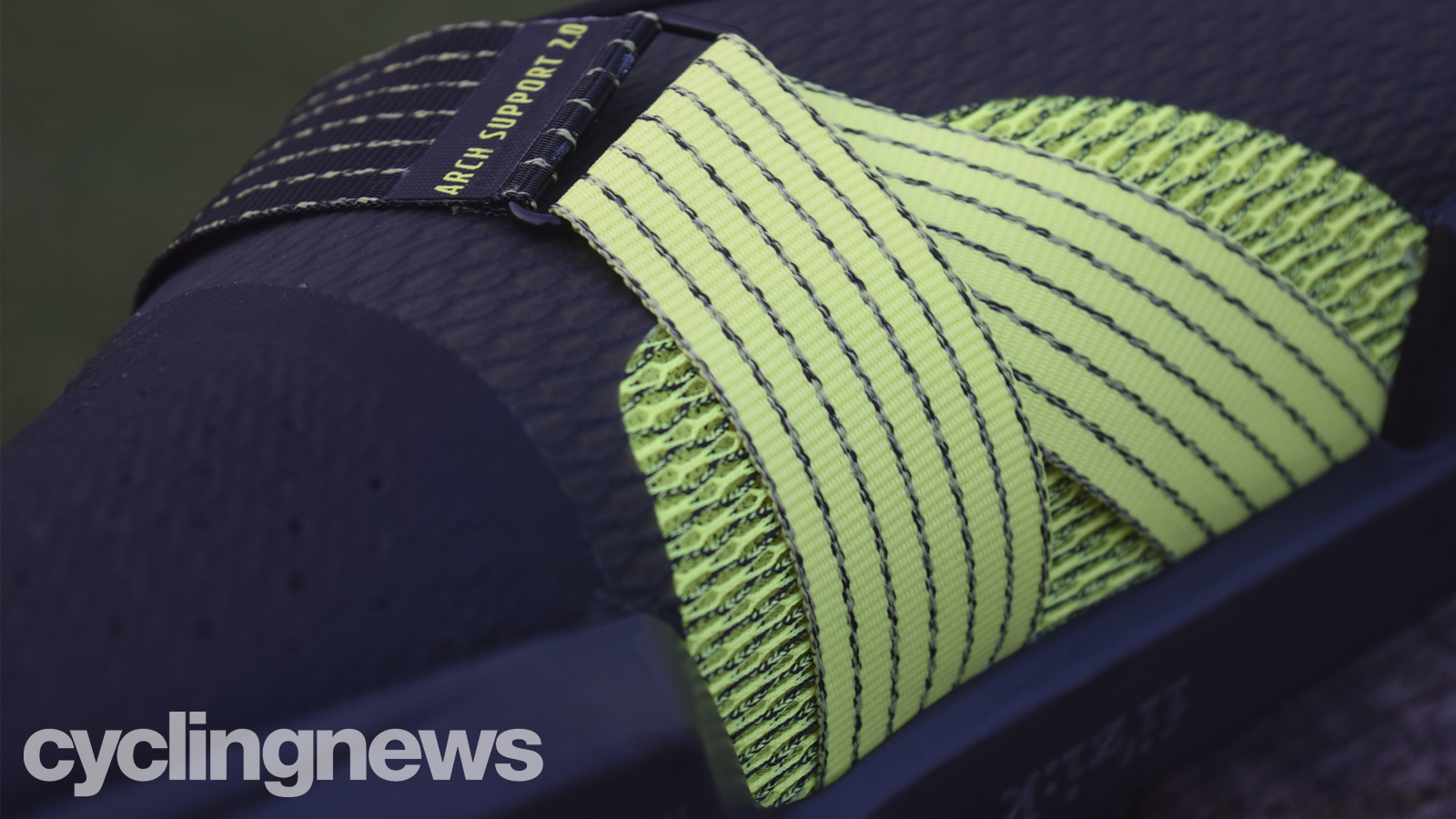
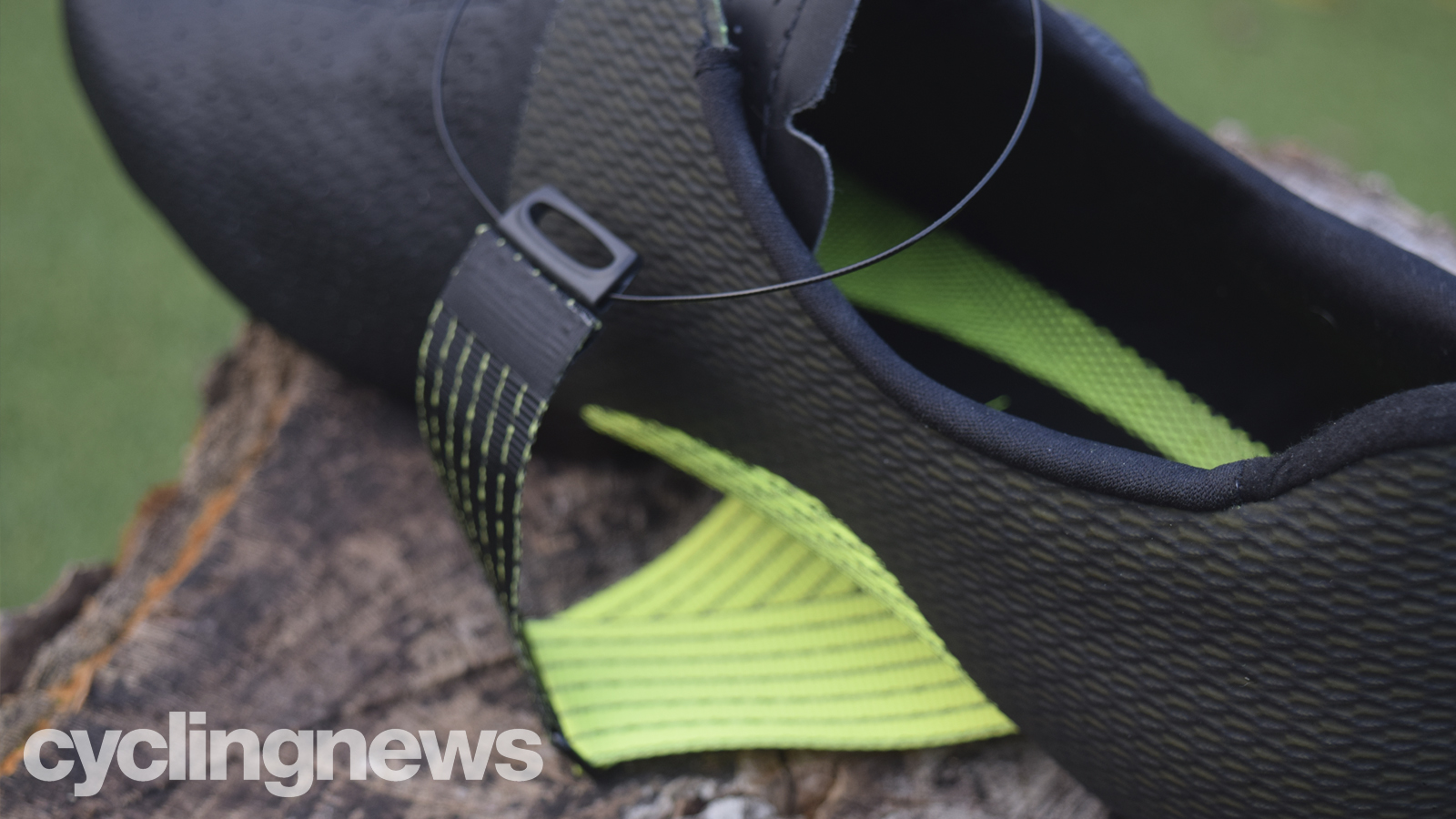
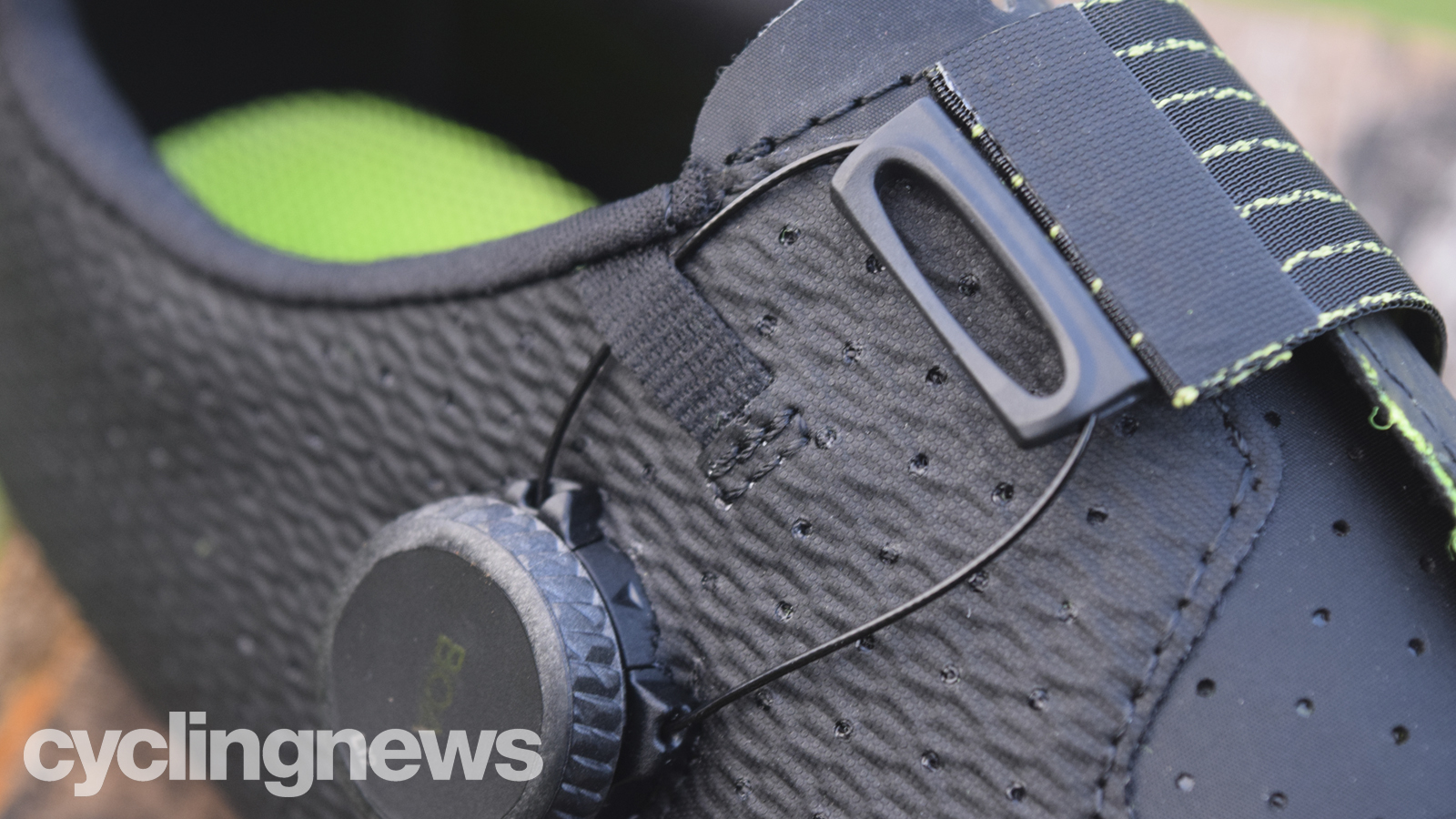
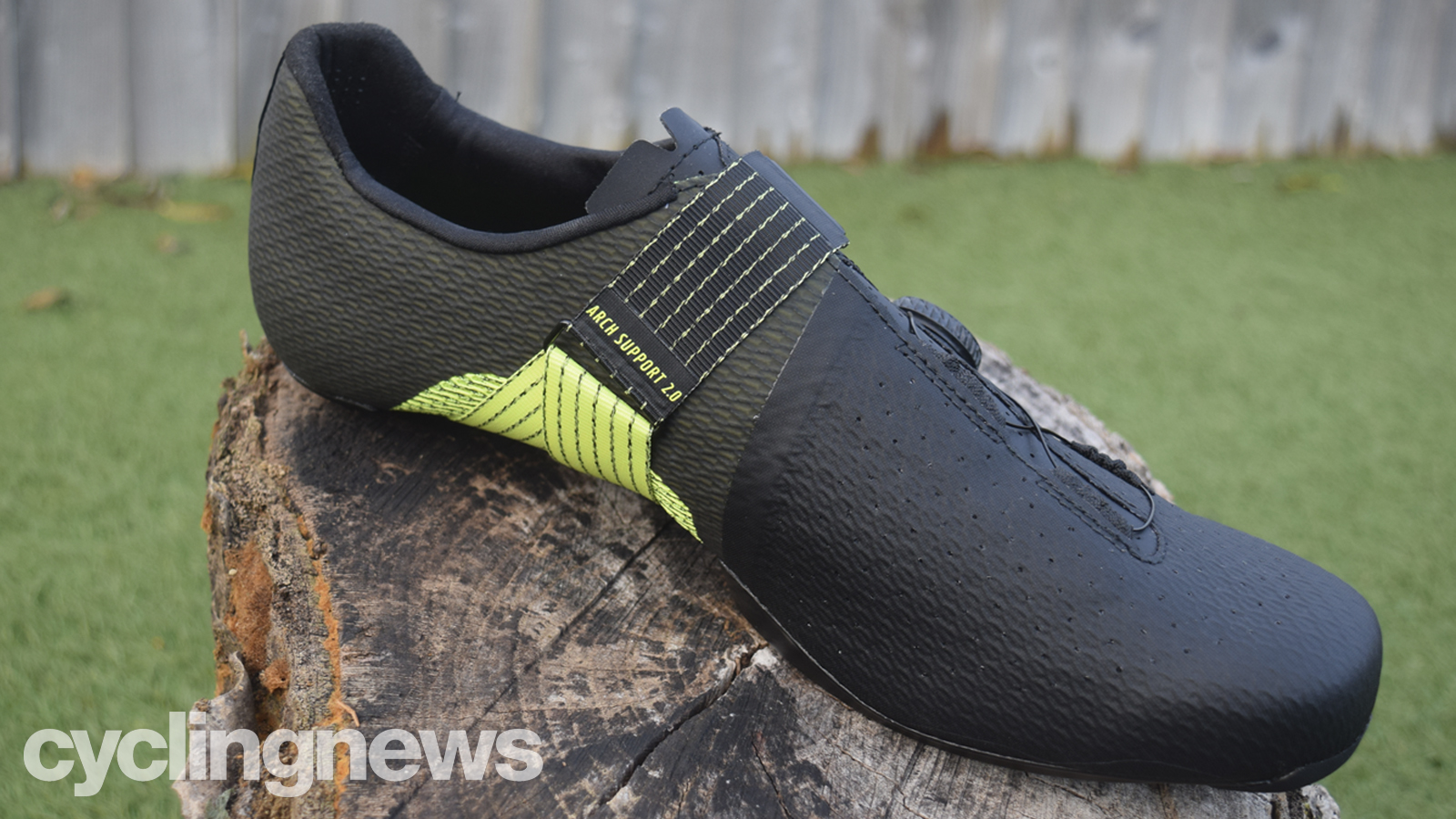
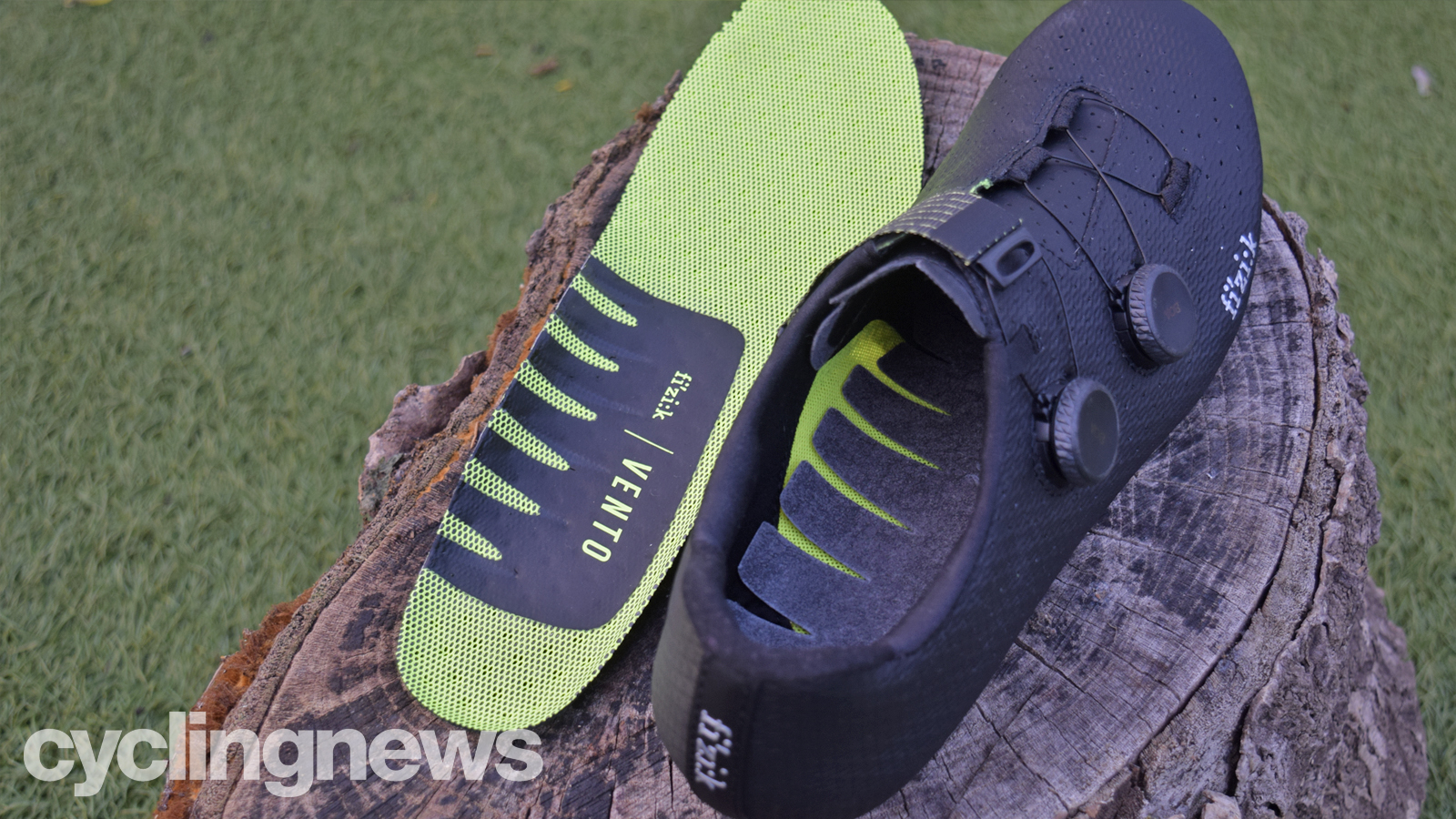
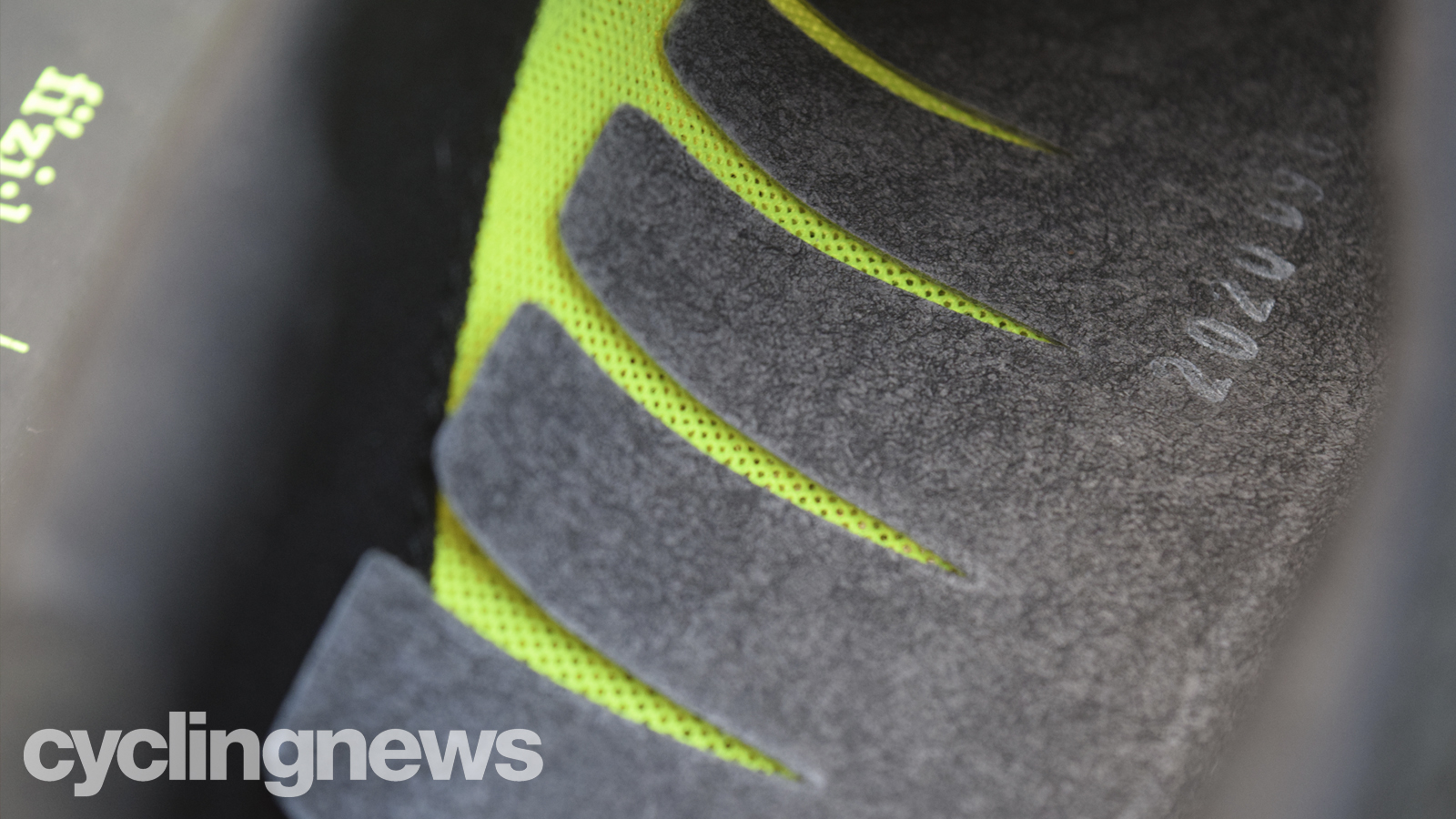
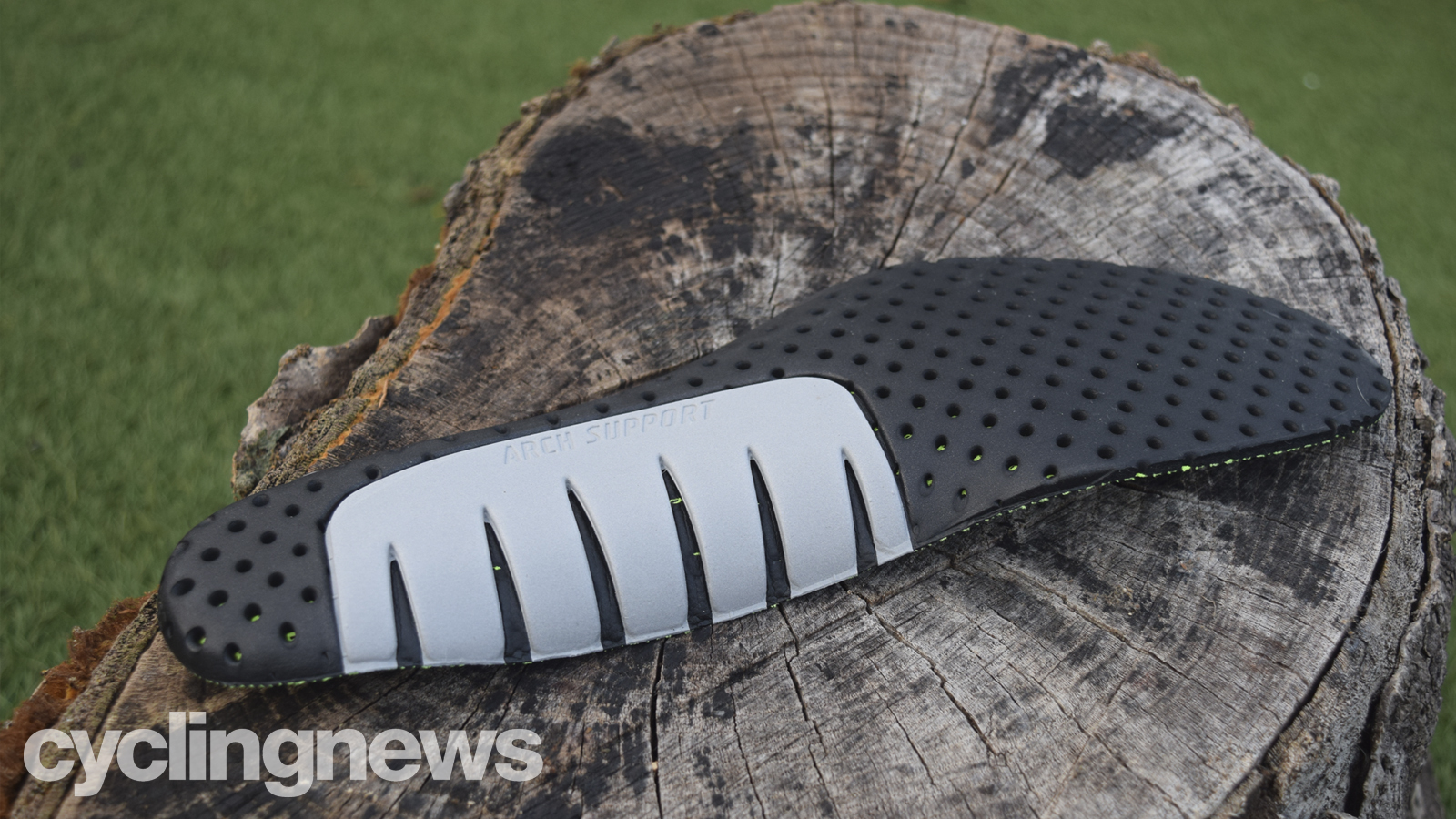
- Best indoor cycling shoes: Keep your feet cool during indoor efforts
- Best cycling socks: colourful, comfortable and cleverly constructed socks for cycling
Filling the gap created by the cut-out is a mesh material, which is covered by an inch-wide looped strap, which is finished in a similar fluo-yellow colour. This loop threads through a metal buckle, which attaches to another single strap, which in turn is affixed to the cable that tightens via the new Boa Li2 dials. There is also a second Boa dial further down the shoe which tightens the volume at the forefoot area. To complement this, the insole has been given a ridged arch, enabling it to conform better to the shape of the foot.
In operation, this basically means that tightening the upper Boa dial not only closes up the shoe like it does on any other shoe, but it also increases the amount of support that the shoe's arch provides. As a result, the arch can be adjusted in minute steps in line with the clicks of the Boa dial.

The fluorescent yellow material used on the instep area is mesh, which means the Vento Stabilita Carbon are very much not designed for wet-weather use, but I have used them with overshoes on a number of occasions and they do hold out water better than expected.
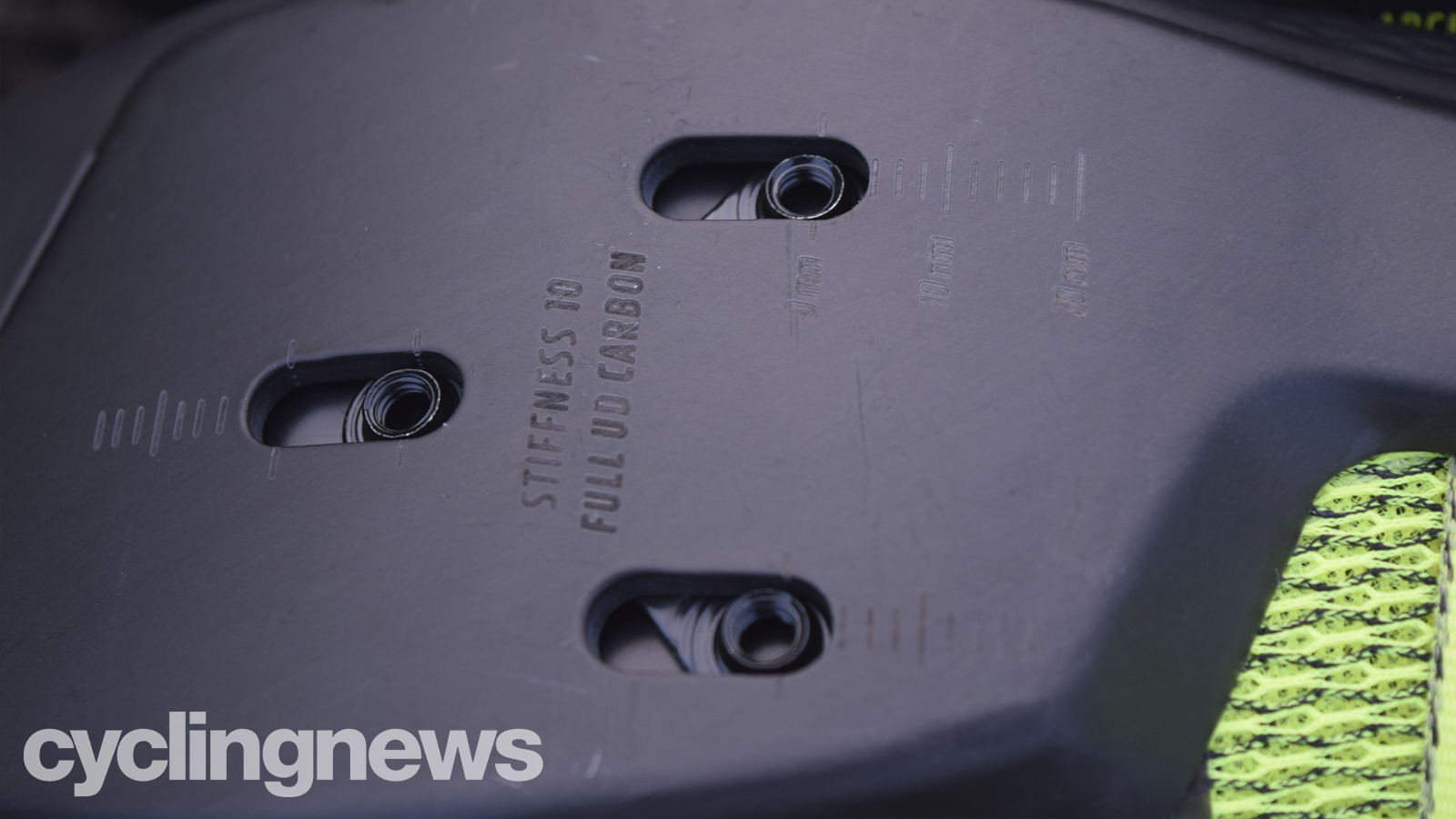
Fizik has also moved the cleat bolts back on the sole, which solves the concern I raised in my recent Fizik Infinito R1 review.
Performance
The first question to answer is the obvious one of whether or not the innovative arch support solution actually works, and the answer is… sort of.
When tightening up the shoes, you can certainly feel the arch support being raised as you cinch up the Boa dial. However, in my experience there is a trade-off between adequate support and shoe tightness.
For my personal arch support needs, there is certainly some support there and it's definitely enough to increase my levels of comfort versus a standard insole, but I find that the shoe's tightness maxes out sooner than the ideal level of arch height is reached. Comparing it to the blue (medium) Specialized Body Geometry insoles, the Fizik support maxes out at around 2-3mm lower, and for reference, I find the medium inserts offered by Shimano's S-Phyre RC901 and Giro's Empire SLX shoes to be about the same as those BG insoles.
Of course, the joy of the Fizik system is that I can raise and lower it in tiny increments, but the downside of arch-support being intrinsically connected to the shoe's tightness is that I would need to overtighten the shoe in order to get any more support. However it's important to note that this is likely going to vary depending on the user, since the required arch support and overall foot size will differ from person to person.
- Best winter cycling shoes: Cold-weather boots to keep you riding through winter
- Best winter cycling socks: keep your feet toasty and your pedals spinning
Returning to the aesthetics of the shoe for a second, when you look at the forefoot, it appears as though the shoe has a tongue that is separate from the inner and outer sides of the shoe, however the outer edge of this tongue is actually fixed into place, meaning the shoe closes with a wraparound style, with the outer edge wrapping beneath the inner.
Why is this important? Well, when tightening the upper Boa dial, the strap that wraps over the foot is pulled taut down onto the shoe. This then presses the inner side of the shoe onto the outer edge beneath, and the resulting friction causes the Boa dial to reach maximum resistance. Therefore, it can often feel as though you've tightened them up as tight as they'll go, only to get onto the bike, ride a few pedal strokes, and realise they're actually still pretty loose.
Once you've got them tight, though, the comfort of the shoes has been exemplary. The polyurethane-laminated material used for the upper is reasonably stiff to the touch, but there are no areas where it digs in and causes pain, and it's supple enough that it envelops the foot with immediate comfort.
They've stood up to the test of British winter, too, being worn in all weather conditions from sun to snow. Of course, the mesh instep means they're not designed to keep your feet warm or dry, but they have been surprisingly capable in this regard. In addition, the large vent at the front of the outsole allows air to be sucked through the shoe and expelled through the mesh, making warm-weather temperature control on par with the summer-specific S-Works 7 Vent shoes.
In a bid to better feel and compare the performance of shoes, I can regularly be found riding in odd shoes - which probably explains my knee pains. It allows a good comparison of things like fit, power transfer and comfort, and I have a benchmark shoe for every aspect I care about: comfort, power, stiffness, fit, sprinting, etc.
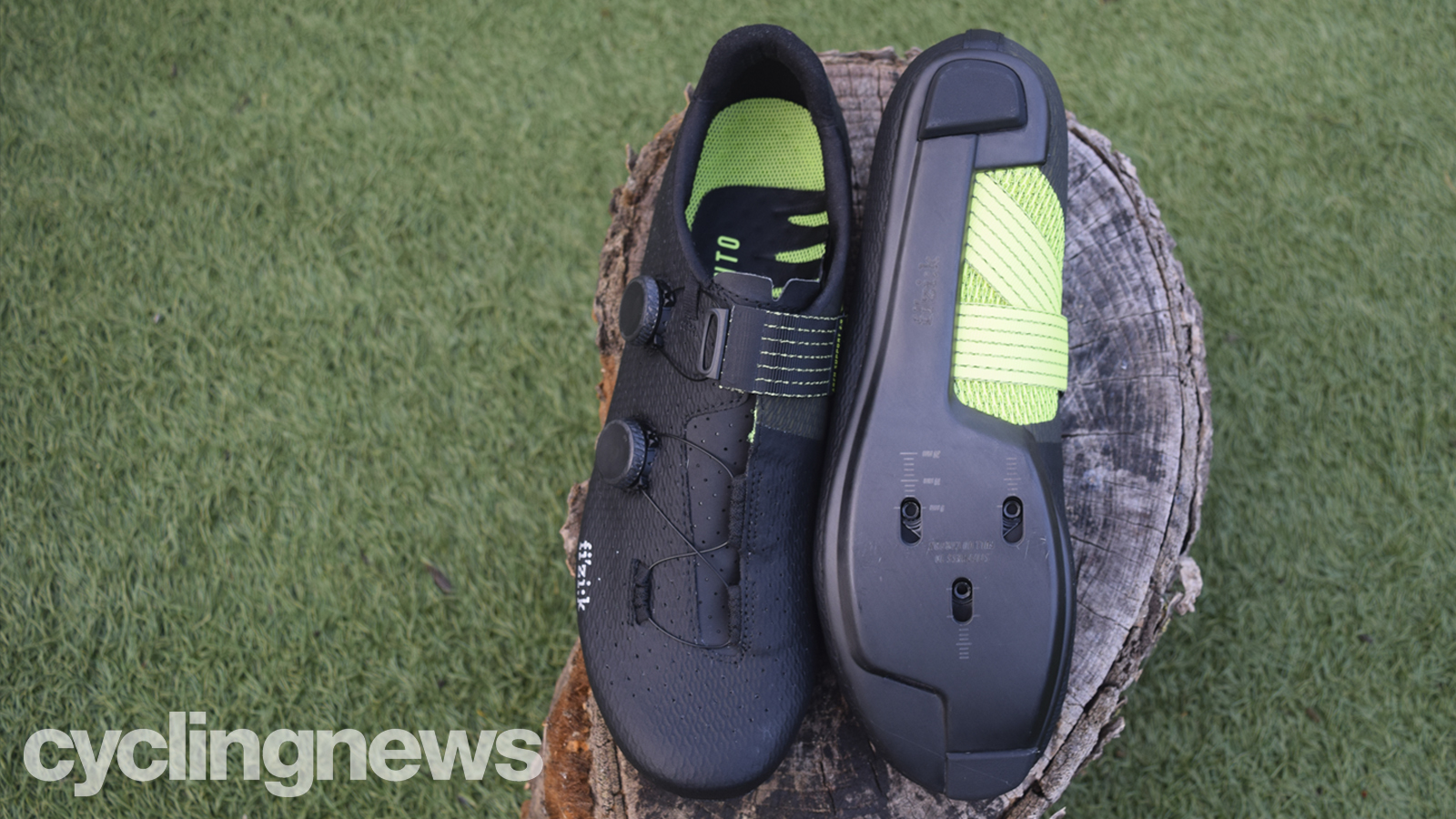
If I were to create a leaderboard for comfort, stiffness and looks, the Fizik Vento Stabilita would undoubtedly be in the running for the top spot for all three. The stiffness of the outsole is especially impressive given half of it is missing.
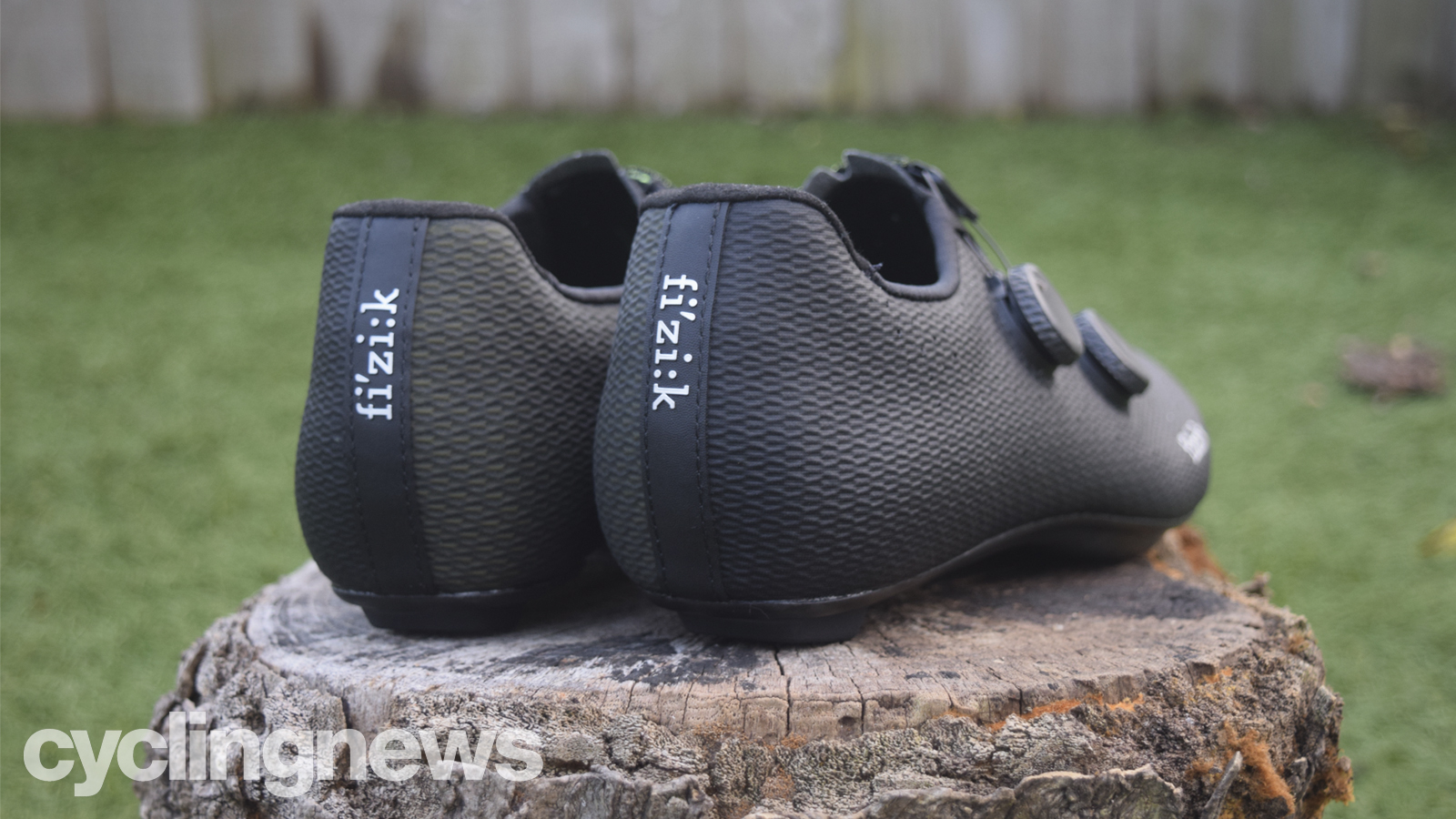
However, they are unfortunately let down when it comes to the fit and security of the shoe as a whole, and especially the heel cup. The overall fit is slightly looser than that of an S-Works 7 or a Shimano S-Phyre RC901, and this can be felt when pulling up through the pedal stroke, especially when attempting to sprint. Wearing the S-Works 7 and the Fizik Vento at the same time, I was able to feel that the Fizik shoes allow for around 5mm more flex when pulling up whilst sprinting.
The hold offered by the heel cup is also a lot more vague than competitors. The cup itself can be bent by hand and only a few silicone microdots are used to aid grip. The positive is that they require zero bedding-in when you first buy them, but it's loose enough that I have been able to fully remove my foot from the shoe (without loosening them, of course) whilst riding. Obviously this isn't something that'll happen by accident, but it shows just how much wiggle room is there.
Verdict
The Fizik Vento Stabilita Carbon shoes tackle the issue of arch support with an inherently simple-yet-genuinely clever design, and they've applied it to a shoe that is instantly comfortable, class-leadingly durable, and superb at temperature regulation.
However, unfortunately, the trade-off between arch support and shoe tightness meant that, for me, the arch support stopped at a level equivalent to low or minimal support. I feel Fizik would benefit from separating the arch support from retention, perhaps with a third Boa (which I admit would look even weirder than Specialized's S-Works Ares) or by operating retention with a single Boa dial like it does for its Tempo shoes.
Furthermore, the price puts these shoes head-to-head with the very best shoes available, and the Vento Stabilita fails to meet the benchmark performers when it comes to power transfer and foot-hold security.
Therefore on the whole, I remain intrigued and excited by Fizik's arch-support solution, but the Vento Stabilita Carbon shoes need a little finessing before they will become a no-brainer replacement for the current crop of best cycling shoes.
Tech specs: Fizik Vento Stabilita Carbon
- RRP: £374.99 / $399.99 / €400.00
- Available colours: Black/Fluo
- Sizes available: EU36 to EU48, with half sizes between 37 and 47
- Retention: 2 x Boa Li2 dials
- Weight: 310g (EU46)

Josh is Associate Editor of Cyclingnews – leading our content on the best bikes, kit and the latest breaking tech stories from the pro peloton. He has been with us since the summer of 2019 and throughout that time he's covered everything from buyer's guides and deals to the latest tech news and reviews.
On the bike, Josh has been riding and racing for over 15 years. He started out racing cross country in his teens back when 26-inch wheels and triple chainsets were still mainstream, but he found favour in road racing in his early 20s, racing at a local and national level for Somerset-based Team Tor 2000. These days he rides indoors for convenience and fitness, and outdoors for fun on road, gravel, 'cross and cross-country bikes, the latter usually with his two dogs in tow.
